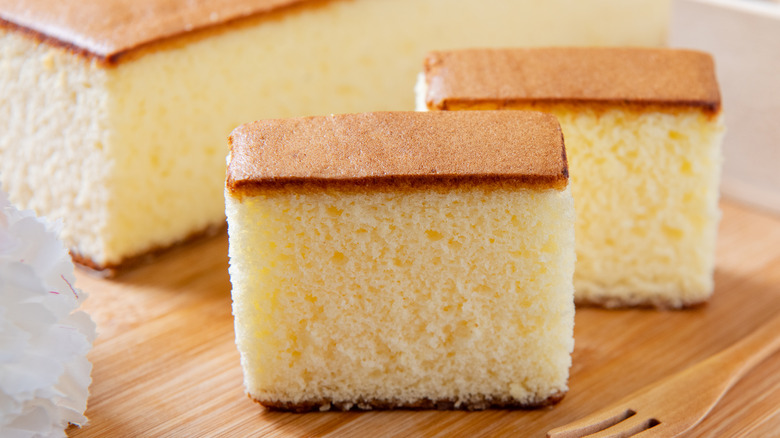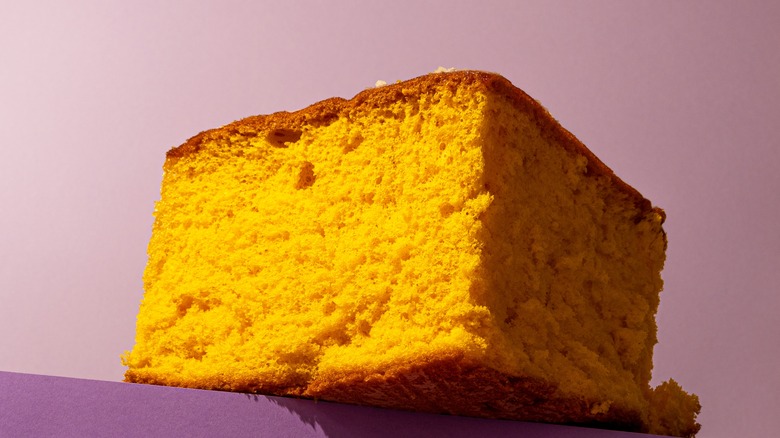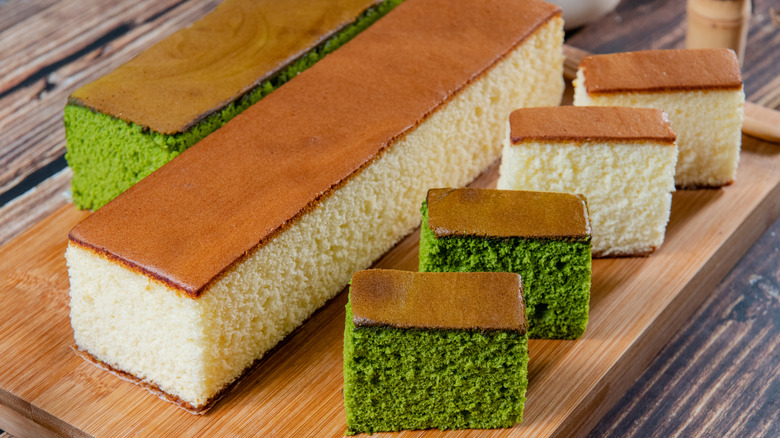What Sets Japanese Castella Apart From Other Types Of Sponge Cake
The idea of bringing different culinary traditions together — aka fusion cuisine — might not have begun trending until the 1990s, but Root explains the practice itself actually started happening centuries before when western and eastern traders crisscrossed the globe and set off the world's first steps toward global trade. One of these early exchanges happened between Portugal and Japan.
Japan's Ministry of Foreign Affairs says doors between Portugal and Japan first opened in 1543 after three Portuguese merchants found themselves in southern Japan after being blown off course. For just over a hundred years and until 1693, when Japan's government opted to close itself off to the outside world, the two sides saw plenty of exchanges involving trade and religion.
It was inevitable that the only permitted visitors would introduce their form of cooking to the Japanese. Out of these exchanges came two enduring icons of Japanese cuisine: Tenpurari, the battered seafood dish widely believed to have become "tempura," per Lost Japanese Food, and a type of cake known as "castella."
Japanese castella was inspired by a traditional Portuguese cake
Visitors to Japan today will recognize castella as "wagashi" or a type of Japanese confection. Food in Japan shares the cake itself is a bright yellow with a dark brown top and bottom, and has a tight, bouncy crumb.
Also known as "kasutera," castella is said to have been inspired by the Portuguese Pão de Ló, which had been called Pão de Castela during the 16th century, the time the pastry appeared in Japan, per Food52. Food in Japan states the cake was popular with Japanese soldiers because it could keep for extended periods of time without spoiling.
The traditional Portuguese cake that inspired castella is similar to a sponge cake and had a traditional recipe that called for 24 eggs, 6 egg whites, 2 and a half cups of sugar, as well as about a cup of flour, which needed to be beaten by hand until its volume had tripled. While the original Pão de Ló doesn't appear to use any leavening agents, its modern-day equivalent calls for some baking powder and a pinch of salt, per Food52, which makes it close to a traditional sponge.
Unlike other sponges, you need just four ingredients to make castella
To make castella today, bakers need just four ingredients: bread flour, eggs, sugar, and honey, per Just One Cookbook, with no leavening agent in sight. In Japan, castella cakes are baked in a wooden cake pan to keep the heat from cooking the sponge too quickly — although the cake can also be made in a regular pan. Its recipes call for enough air to be beaten into the eggs in order to help the cake rise, much like the original Portuguese cake. Unfortunately, castella also cannot be over-mixed, or the batter will fall.
More importantly, most sites that offer a castella recipe, like Taste Asian Food, also recommend that high-protein bread or "strong" flour is used to make the cake, which will give you the smaller crumb and the bouncier texture that this Japanese sponge is best known for. By contrast, low-gluten or cake flour is called for when making sponge cake, which makes the sponge the light and fluffy cake that you know it to be (via Our Everyday Life).


